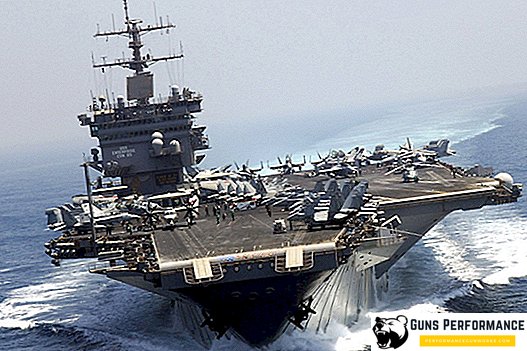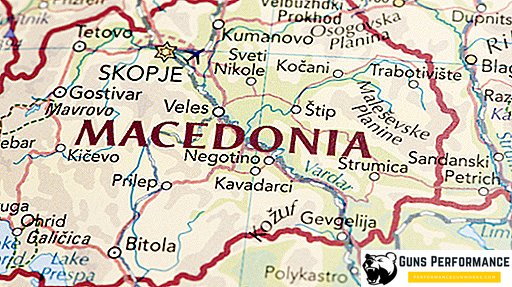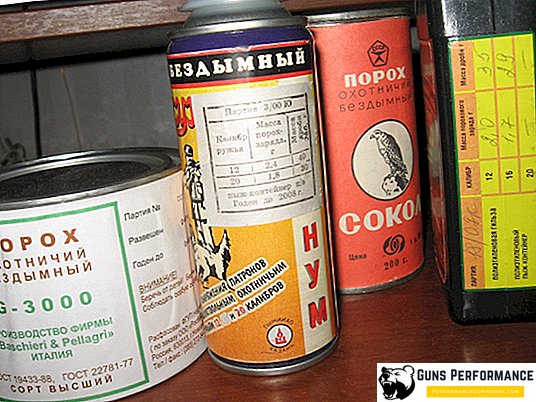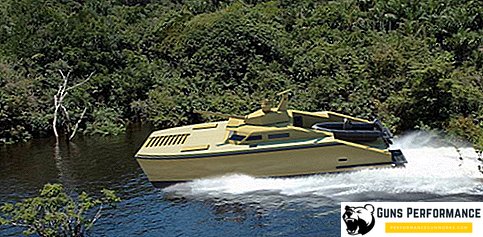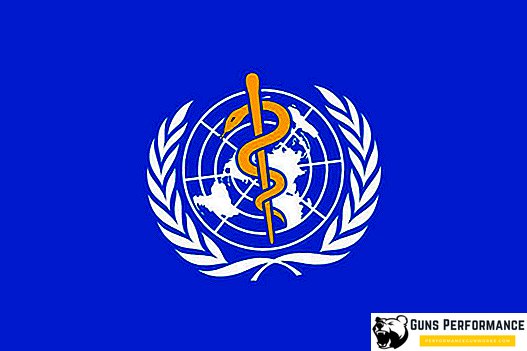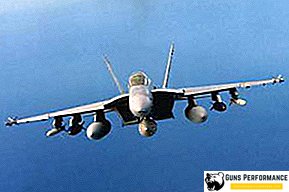The Republic of Chile is a country with a presidential form of government, in which the principle of separation of branches of government is enshrined in law. The last Constitution of the country was able to significantly limit the power of the head of the republic: now the president does not have the right to appoint members of the upper chamber of parliament. The head of the country has the right of legislative initiative and can appoint referendums. The latest amendments to the Constitution ensure a balance between the branches of government in Chile. The ruler of a country can dissolve the lower house of parliament once during his presidential term. At present, the post of President of Chile is occupied by Sebastián Piñera Echenique, who was elected to this post in 20018.
The conquest of the territories of Chile by the Spaniards, and the struggle of local residents for the independence of the country

Before the Spanish conquerors fell on the territory of the modern state of Chile, Indian tribes lived there:
- Araucana;
- Aymara;
- Chango;
- Chon;
- Atacameno.
All these tribes were engaged mainly in hunting, farming and fishing, and in the XV century were conquered by the Incas. The only major tribe that remained free from the power of the Inca state of Tauantinsuyu was Araucana, numbering between 500,000 and 1,000,000.
In the 16th century, the Spanish conquest of modern Chilean lands began. The main objectives of the conquistadors was the seizure of Indian treasures and the search for gold and silver deposits. Unfortunately for the invaders, they did not find wealth here, but the local population, tempered in battles with the Incas, fiercely resisted the invaders. In 1541, the Spaniards managed to lay the city of Santiago. Towards the middle of the 16th century, Chilean territories were conquered and incorporated by decree of the King of Spain into the viceroyalty of Peru. Despite the fact that this kingdom was actively developing at the expense of immigrants, who arrived here hoping to get rich quickly, the territories of modern Chile did not attract settlers, because they have not yet found precious metals.
Spain and Peru for a long time had to finance the costs of maintaining the army and officials in Chile, as this part of the kingdom could not provide for itself. The main problems of the region were as follows:
- Spain imposed trade and production restrictions on its colonies in the New World;
- There was still a catastrophic shortage of immigrants;
- The economy of the region depended entirely on Peru;
- Administrative management was also carried out from Peru.
The main task of the colony was to somehow separate from the viceroy. In 1778, the status of the colony was changed to Captain-General, after which Chile was able to directly trade with Spain and other Spanish colonies in South America.
In 1808, the period of the Napoleonic wars began in Europe, as a result of which the power over the American colonies weakened. The Spanish king Ferdinand VII was overthrown in 1808, but the city council of Santiago did not dare to revolution for another 2 years. In 1810, the captain-general was dismissed, and a government junta was chosen instead. The new government hastened to undertake a series of reforms aimed at liberalization, but this could not improve relations between the junta and the Creole elite, among which were many supporters of the monarchy.
In 1811, supporters of independence, headed by Jose Miguel Carrera, were able to organize a military coup. In 1814, when the problem with Napoleon in Europe was cleared, Spanish troops invaded Chile to take the province back under control. Since the Spanish troops were much better armed and had great experience, they quickly managed to smash the rebel army and take Chile back. Until 1817, the Spaniards with incredible harshness suppressed all attempts of the local population to rebel against the monarchy.
In 1817, hostilities resumed between the Spanish crown and the liberation army of Chile. The Chilean leader, Bernondo O'Higgins, was able to negotiate with the Argentine general José San Martin and with him put a powerful and crushing blow to the Spanish army. In 1818, Chile declared itself an independent country, but the Spanish troops for several years tried to return the colony to the crown.
Independent country of Chile until the beginning of the XX century

O'Higgins became the supreme ruler of an independent state, who implemented the following reforms:
- He pursued an active foreign policy;
- He published in 1818 the Constitution, in which the supreme ruler of Chile was vested with broad powers;
- I was able to remove the land aristocracy from government;
- Restricted the church in its rights, which during the Spanish rule were quite high.
In 1822, O'Higgins achieved the promulgation of a new Constitution, in which the status of the supreme ruler was raised even more. The aristocracy and representatives of the church rebelled against the government, and, with the support of the army and the masses, were able to achieve the resignation of O'Higgins.
Beginning in 1822, a difficult period of instability emerged in Chile, during which no party could achieve victory in the political arena. In 1823, the liberals were able to achieve the abolition of slavery, for which advocates of the conservative parties favored. Most of the country's rich elite supported the Conservatives, who only in 1829 managed to take power into their own hands, through the establishment of the junta. Despite this, actual power was concentrated in the hands of Diego Portales.
In 1833, a new constitution was adopted in Chile, in which the following points were spelled out:
- The system of separation of powers;
- The creation of a state led by the president;
- Congress had many powers, but the head of the country could veto his decisions;
- A consensus was reached between the parties that were at enmity with each other, as representatives from various forces were elected to the congress.
In addition, the Chilean society rallied the war perfectly with the confederation of Peru and Bolivia, which ended with the victory of Chile. During this war, Diego Portales died, who was the real ruler of the country. Despite his death, the political situation in Chile remained calm. During the quiet period, several presidents changed in the country:
- From 1831 to 1841, Joaquin Prieto was in power;
- From 1841 to 1851, Manuel Bulnes was president;
- Manuel Montt led the country from 1851 to 1861.
In 1861, Jose Joaquin Perez came to power. Starting from the time of his reign, and until 1891, a period in the country known in history as the "liberal republic" was designated in the country. At this time, the following changes occurred:
- The privileges formerly held by the church and the land aristocracy were revoked;
- At an accelerated pace, transport systems began to develop;
- Schools opened across the country;
- The southern lands were actively developed;
- Created conditions that stimulate immigration.
In 1874, an electoral reform was carried out, according to which the property qualification was abolished, after which all the adult men of Chile could participate in the elections. All this has a beneficial effect on the emergence of new parties.
In 1886, President José Manuel Balmaceda, who ruled the country until 1891, came to power. It was he who caused the end of the period of the "liberal republic". The new head of state decided to enhance the role of the state in the country's economy, and increase presidential powers in this area. The main task Balmaceda wanted to solve was an increase in the mineral extraction tax rate, since the mines in the country were in the hands of foreign companies. All this provoked the emergence of a powerful opposition, which was sponsored by foreign capital. The following forces rebelled against the president:
- Congress;
- The big bourgeoisie;
- Conservatives.
As a result of this, a civil war broke out in the country in which Balmaceda lost. The president committed suicide.
After 6 presidents and 2 acting heads replaced as head of state, Arturo Alessandri Palma was elected in 1920. He ruled the country until 1924, in which he was overthrown by conservatives. Despite this, Palma returned to his post in 1925 with the help of the military. In the same year, a referendum was held in the country, at which a new Constitution was adopted, providing for the following points:
- The president was to be elected in direct elections;
- The head of state was given more authority;
- The church was completely separated from the state;
- The social and political rights of Chilean citizens have expanded.
In 1927, President Lorain, who ruled the country after Arturo Palma, was replaced by Carlos Ibáñez dal Campo, who had previously been Minister of the Interior, and before that - the military. In 1931, he resigned, and left the country, as he feared for his life. In 1932, a group of military proclaimed the Chilean socialist republic, which was able to survive for about two weeks, after which it fell as a result of another military coup.
Development of an independent republic in 1932-1970

In 1932, the role of the country's president for the second time went to Arturo Alessandri Palma. He ruled Chile until 1938. After his election and inauguration, the political situation in Chile was able to stabilize. The next president was Pedro Cerda, who died in 1941, thereby freeing the presidency. Because of these events, special elections were called, at which Antonio Rios Morales won. He remained in power until 1946. Under Morales, the country broke off all relations with the countries of the Hitler coalition and soon declared war on them.
In 1946, Chile held another presidential election, which was won by Rafael Gonzalez Videla, who remained in power until 1952. The next president was Carlos del Campo, who became famous as a dictator during his first reign. He was supported by representatives of all parties, as they were confident that Kampo would be able to boost the Chilean economy. In 1958, Jorge Alessandri Rodriguez, the son of former President Arturo Palma, became the new head of the country. He honestly tried to solve economic problems in the country:
- Built affordable housing;
- Opened new schools;
- Organized public works.
All these measures could not solve the main problems of the country, so the next president, Eduardo Frei Montalva, got a country that was in dire need of reform.
The new head of Chile, who ruled until 1970, pursued a policy called "revolution in free conditions." Montalve was able to achieve the nationalization of the copper mines in Chile, and in order not to spoil relations with the United States of America, the president took only 51% of the shares from their firms.
Chile from 1970 to 1990: Pinochet regime

After a difficult election race, Salvador Allende was elected president of the country (government years from 1970 to 1973). In 1973, the situation in the country heated to the limit:
- In June, an unsuccessful military coup attempt was made;
- A strike of transport workers began, causing the Chilean economy to be in chaos;
- The work of many enterprises in the country was stopped, because of which the common people lost their jobs;
- Attempts by the government to negotiate with the drivers' trade unions failed, despite the fact that the Catholic Church was involved.
On September 11, 1973, General Augusto Pinochet, who led the military, carried out a military coup, as a result of which the government was overthrown. President Salvador Allende died in the storming of the residence, although it is officially stated that he shot himself with a machine gun, which in itself raises doubts. After the military seized power, the following events occurred:
- Congress dissolved;
- The constitution was suspended;
- All "left" parties and trade unions banned;
- The radical, national and christian democratic parties were dissolved.
The regime of General Pinochet was initially seriously supported by the US government. In 1976, this support ceased, since J. Carter, who was elected president of the United States in 1976, did not support the Chilean authorities. Nevertheless, Pinochet stayed in power in fact for several consecutive terms, since in 1981 he was elected as a result of a plebiscite.
In 1987, the military junta was forced to legalize political parties, because the whole world community forced Chile to do this, especially since the democratization of power occurred in other states of South America. In 1988, Pinochet tried to extend his powers in a referendum for another 8 years, but the people indignantly rejected this proposal. Despite this, the state leader remained in power until 1990.
Chile in the late 20th century and early 21st century

In 1989, Pinochet put forward his candidacy for multi-party presidential elections. He expected that the military and the police would vote for him, and he would remain in power. But even some of the military cast their votes for the representative of the Christian Democratic Party, Patricio Aylwin. He served as president until 1994. For 4 years, the head of state has managed to achieve some success:
- Formed a coalition civil government;
- Resumed the work of the congress;
- Increased living standards of citizens;
- Increased salaries and pensions;
- Reduced unemployment.
In 1994, Eduardo Frey Ruiz-Tagle, who was the son of ex-president Frey, was nominated for the presidency of the party. The head of state tried to amend the Constitution, but he did not succeed, because the upper house of parliament did not give it her "good". Eduardo Frey reigned until 2000, and until 1998 Pinochet, who remained commander-in-chief of the ground forces until his retirement, could significantly influence Chile’s policies.
In 2000, Ricardo Lagos came to power. By order of the president, the former dictator Pinochet was brought to justice. Lawsuits continued until 2005, in which the old general was still placed under house arrest. In 2006, the court decided to release Pinochet on bail, but in the same year, the former dictator died after a severe heart attack.
In 2006, Ricardo Lagos replaced the new president - Michelle Bachelet. For the first time in the history of Chile, a woman was chosen as head of state. She was a candidate from the Socialist Party and before being elected president, she held the posts of Minister of Health and Defense. Immediately after being elected president, Michel was in for an unpleasant surprise: Chilean schoolchildren took to the streets of Santiago and blocked the city center. Then, about 3,000 schoolchildren participated in the rally, which were dispersed by the police. On May 31, the actions were repeated, only about 600,000 students participated in them.
In 2010, the president of Chile was Sebastián Piñere, who is one of the richest people in the world (according to unofficial data). He was supported by the rich elite of the Chilean society and supporters of Pinochet. He remained in office until 2014, in which Michel Bachelot again became president.
Currently, the current Chilean ruler is Sebastián Pinnier, who was re-elected on March 11, 2018.
The status of the president and the main features of the executive branch of Chile
The head of state in Chile is a president who must meet the following criteria:
- Have Chilean citizenship by birth;
- Reach the age of 35;
- The head of state is elected for 4 years in general elections.
In accordance with the Constitution, part of the legislative powers may be included in the duties of the president. The candidate who can get at least 50% of the total number of votes should win the election. If none of the candidates gets the required number of votes, then you need to hold a second round of elections, in which only two favorites will take part.
In Chile, the highest executive body is the Council of Ministers, which is formed by the head of state. Only Chileans by birth who have reached the age of 21 can serve as ministers.
Residence of the President of Chile - Palace of La Moneda

The official residence of the head of state is the palace of La Moneda. It is located in Santiago. This is where the president’s reception is located. The ruler shares the building with the Ministry of the Interior, government secretaries and his office. The presence of several public services in the same building reduces the bureaucracy in the country.
The palace of La Moneda was founded in 1784 and was built until 1805. Его главным архитектором стал итальянский эмигрант Хоакин Тоески, который должен был разработать это здание в стиле классицизма для размещения в нём монетного двора. В 1845 году Мануэль Бульнес сделал монетный двор резиденцией главы государства по совместительству, а в 1930 году Габриэль Видела сделал дворец официальной резиденцией.
В 1873 году резиденция главы государства существенно пострадала в результате военного переворота. Ремонтные и восстановительные работы затянулись до 1981 года. Это было связано не только с отсутствием средств в бюджете страны: Пиночет, который пришёл к власти, распорядился построить под зданием специальный подземный бункер.
В 2003 году по распоряжению президента Рикардо Лагоса дворец Ла Монеда был открыт для посещения туристами. В 2006 году перед резиденцией президента была построена новая площадь, на которой установили памятник Артуро Алессандри.


